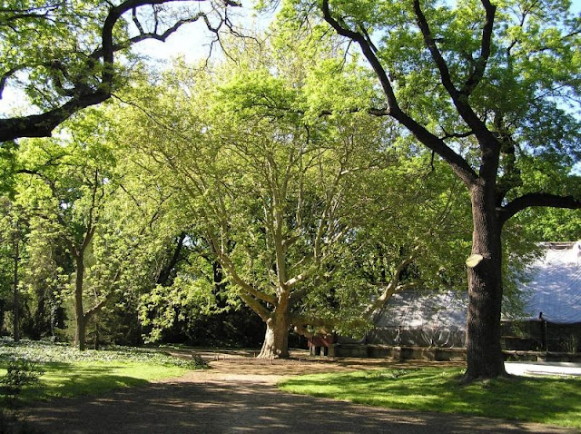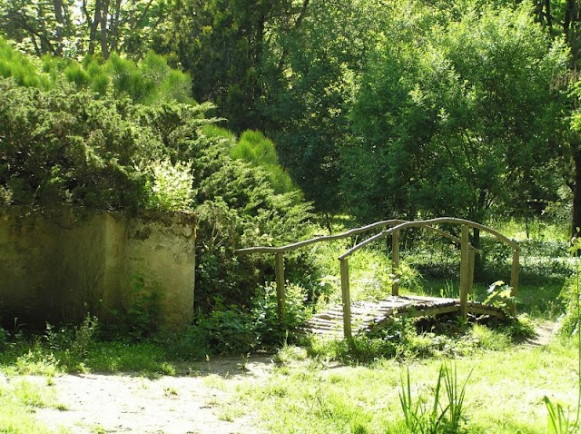Odesa National University
Odesa National University (Oдеський національний університет ім. І. Мечнікова; Odeskyi natsionalnyi universytet im. I. Mechnikova, ONU). A higher educational institution in Odesa, under the jurisdiction of the Ministry of Education of Ukraine. A member of the European University Association (since 1991) and the International Association of Universities (since 1995). It was founded in 1865 as New Russia University on the basis of the Richelieu Lyceum, on the initiative of Nikolai Pirogov, the head of the Odesa school district. The tsarist officials initially opposed the founding of a university in Odesa because they considered the city to be a hotbed of unrest, and offered instead Mykolaiv as a site. Under pressure from the local nobility and merchants, Tsar Alexander II granted the university status to the Richelieu Lyceum on 10 June 1862. New Russia University benefitted from the Great Reforms initiated by Alexander II in the late 1850s, particularly the new statute of Russian imperial universities of 1863. The statute safeguarded university autonomy by restoring the election of rectors and professors, reducing administrative surveillance, and lifting censorship.
New Russia University initially consisted of three faculties: history and philology, physics and mathematics, and law. The initial enrollment was 175 students; by 1880 there were 346 students and 45 professors. Almost half of the students were children of the clergy; 70 percent of the students received either scholarships or bursaries. Reflecting the cosmopolitan demographics of Odesa, the university students came from diverse backgrounds (Jews, for instance, made up 16.5 percent of all students in 1881, comprising an even higher share in the faculty of law—around 41percent). The enrollment grew from 506 in 1894 to 3,288 in 1908. Most of the students came from Southern Ukraine, the Don region, or Caucasia, although the school also attracted students from the Slavic countries in the Balkans. A faculty of medicine was created in 1900. All instruction was in Russian, although in 1906 there was an attempt to initiate a Ukrainian history course to be offered in Ukrainian by Oleksander Hrushevsky. The university published its Zapiski Imperatorskogo Novorossiiskogo universiteta from 1867 to 1919. A leading centers of natural and exact sciences in the empire, New Russia University employed a number of prominent scholars, such as zoologist Illia Mechnikov, biologist Oleksander Kovalevsky, mathematician Anton Bilimovych, and pathophysiologist Oleksander Bohomolets (president of the All-Ukrainian Academy of Sciences (VUAN) in 1930–46). There were also prominent scholars in the humanities and social sciences, among them psychologist Nikolai Lange; historians Petr Bitsilli, Fedor Uspensky, Oleksii Markevych, and Heorhii Peretiatkovych; legal scholar Vladimir Rennenkampf; and philologist Volodymyr Lazursky.
After the February Revolution of 1917 in Russia, the economic conditions of New Russia University considerably weakened. Although Central Rada and the Hetman government of Pavlo Skoropadsky promised funding, not much assistance was delivered. During the Ukrainian struggle for independence (1917–20) attempts were made to Ukrainianize the university. Courses in the history of Ukraine and Ukrainian literature were taught by Yevhen Trefiliev, Yevhen Zahorovsky, and Serhii Vilinsky. Under Soviet rule the university’s autonomy was virtually abolished and the ultimate power in the university was now in the hands of a Bolshevik-appointed commissar. One of the few encouraging developments during those years was the appointment of 23 women to the positions of privat docent in the faculties of medicine and physics-mathematics. In 1920 New Russia University was dissolved, and the various faculties were separated from the university to form three independent research institutes (medical; physics and mathematics; and the humanities and social sciences). Later that year some of the newly created educational institutions (including Ukrainian Teachers’ Institute established in 1919) were combined to form the Odesa Institute of People's Education (OINO). OINO was to train teachers for elementary schools and vocational schools and had three nationality departments: Ukrainian, Russian, and Jewish. In 1921 OINO incorporated most of the curriculum in natural sciences, the humanities, and social sciences from the three independent institutes—the successors of New Russia University—that were to be abolished. The enrollment grew from 243 in 1922 to 603 in 1925 to 1,042 in 1928. As for the ethnic profile of the students, Jews comprised the largest group (254) of all first-year students in 1930, followed by Ukrainians (196), Russians (56) and Germans (53). The policy of Ukrainization achieved limited success: in 1928 more than 62 percent of courses were taught in Ukrainian, but Ukrainians remained a minority among faculty members during the whole period, making up merely 21 percent of the faculty, while Russians comprised 40 percent and Jews, 30 percent.
In 1933 several institutes were merged again, to form Odesa State University (ODU), which, in 1939, consisted of six faculties: history, philology, physics and mathematics, biology, geography, and chemistry. In the 1920s and 1930s a number of prominent scholars were associated with OINO and ODU, including botanist Volodymyr Lypsky (VUAN president in 1922–8), microbiologist Danylo Zabolotny (VUAN president in 1928–9), astronomer Konstantin Pokrovsky, psychologist Sergei Rubinshtein, chemist Vsevolod Bohatsky, classical philologist Boris Varneke, historian Mykhailo Slabchenko, and archeologist Mykhailo Boltenko. During the years of Stalinist terror, more than 100 faculty members and students, including two rectors, were purged from the university, some of them executed or sent to the GULAG labor camps.
At the beginning of the Second World War, ODU was evacuated to Krasnodar, Krasnodar krai, RSFSR, and later to Bayram-Ali in Turkmenistan. During the three years in evacuation the student enrollment averaged between 250 and 500. Meanwhile, Romanian occupation authorities opened in the city Universitatea din Odesa. Its student enrollment was 2,000. The renowned local physician Pavel Chasovnikov was appointed its rector (for which he was later repressed by the Soviet authorities). Faculty members of the former Soviet university were often pressured by occupiers to resume work at the new university.
With the retreat of the Romanian troops, ODU was reopened in Odesa in 1944 with 360 students and 50 faculty members. It consisted of six faculties: philology; physics and mathematics; chemistry; biology; geography; and history. Four new faculties were added later in the decade: geology and earth science; law; statistics (later renamed into economics and still later merged with history); and foreign languages. In 1945 ODU was named in honor of the biologist Illia Mechnikov. In the final years of Joseph Stalin’s rule another wave of political repressions decimated ODU (among their main targets was the distinguished neuropathologist Hryhorii Markelov, academician of the Academy of Sciences of the Ukrainian SSR).
In the first postwar years ODU remained one of the most ethnically diverse institutions of higher learning in Soviet Ukraine: Ukrainians, Russians, and Jews comprised almost equal shares among its faculty (although the number of Jews tended to decrease). In 1954 the number of ethnic Ukrainians employed by the university for the first time in its history exceeded half of all academic staff, and since 1956 all official documents issued by rector and academic council were written in Ukrainian (although most teaching was in Russian). The university underwent a large structural change in 1956–7 by incorporating a few pedagogical institutes located in other regions. This radically increased the number of university chairs and faculty members. The proportion of female faculty members was continuously growing: from one-third in 1950 to 45 percent by 1970. The 1960s saw another rising trend: the increased links between university research and industrial sector, which resulted in a series of ‘economic agreements’ between faculty members and industrial enterprises. Along with the focus on applied sciences and technologies, universities in Soviet Ukraine in the 1960s were subjected to more rigorous ideological control. As a result, a chair of Scientific Communism was opened at ODU in 1964, tasked with spreading propaganda across university faculties. Since 1957 all students had to take a course on ‘scientific atheism.’
By the early 1970s another negative trend had become evident: a decrease in investments in sciences and technology in the Soviet Union compared to the leading Western nations. Several innovative fields such as microelectronics, information science, and biotechnology were particularly badly affected. Nonetheless, ODU managed to retain its leading role in fundamental science by establishing in 1972 a groundbreaking research ‘complex’ of organic and biological chemistry in partnership with the Academy of Sciences of the Ukrainian SSR. In the 1970s and 1980s the university’s academic structure remained largely unchanged and included nine faculties: law; philology; history; Romance and Germanic languages; physics; biology; geology and geography; chemistry; and mechanics and mathematics. In addition to faculties, the university also operated the research institute of physics, the Odesa Astronomical Observatory (built in 1871), an information technology center, 17 research laboratories, two engineering centers, a botanical garden (opened in 1867), and several museums (among them a valuable zoological museum). The student enrollment rose from 8,180 in 1960–1 to 12,000 in the mid 1980s.
In independent Ukraine ODU remained a leading ‘classical’ university. A number of new majors were added, among them biotechnology, applied physics, computer engineering, management, political science, journalism, sociology, social work, and finances and credit (more than 40 in total). Several new research and scientific centers have been created after 1991: the research and learning center for biotechnology, the interdepartmental center for physics and technology, and the center for ecological monitoring. In 1999 Odesa State University was granted the status of a national institution of higher learning and assumed its current name: Odesa National University (ONU). As of 2021 ONU has eleven faculties: biology; geology-geography; economy and law; history and philosophy; journalism, advertising, and publishing; mathematics, physics, and information technology; international relations, political science, and sociology; psychology and social work; Romance and Germanic philology; philology; and chemistry and pharmaceutics. It also operates the Mechnikov professional college, a pre-college preparation program, and the center for leadership in education. The student enrollment is over 10,000.
Today ONU is one of the most prestigious institutions of higher education in Ukraine. It has been consistently ranked among nation’s best universities and enjoys particular renown in the fields of biology, chemistry, philology, and political science. In 2021 it was ranked eighth in the Consolidated Ranking of all Ukrainian universities conducted by the influential educational web portal Osvita.ua. It was also ranked as the fifth best ‘classical’ university in Ukraine.
ONU boasts one of the earliest and largest scholarly libraries in Ukraine, dating back to 1817 when it was founded as the library of the Richelieu Lyceum. Over time the library incorporated 17 personal collections donated by scholars and statesmen (most notably counts Vorontsov and count Aleksandr Stroganov). Today the library has over 4 million volumes, including numerous rare old books in multiple languages and an extensive collection of periodicals (beginning with the earliest European newspapers of the seventeenth and eighteenth centuries). The university continues to operate a botanical garden, the Odesa Astronomical Observatory, and four museums (zoological, rare book editions, paleontological, and geological-mineralogical). ONU has published more than 30 scholarly journals and almanacs, including Visnyk Odes'koho nasional'noho universytetu (since 1997), in several series, such as biology, geology, economy, mathematics and mechanics, law, philology, and others. Other prominent periodicals include: Zapysky istorychnoho fakul'tetu (31 vols, 1995-), Odessa Astronomical Publications (published between 1946 and 1963 as Izvestiia astronomicheskoi observatorii, renewed in 1992) (33 vols, 1946–), Photoelectronics (29 vols, 1986–), Doslidzhennia v matematytsi i mekhanitsi (25 vols, 1997–), Zapysky z ukraїns'koho movoznavstva (27 vols, 1995–), Mova (34 vols, 1993–), Chornomors'ka mynuvshyna (15 vols, 2006–), Slov’ians'kyi zbirnyk (23 vols, 1996–), and Rynkova ekonomika (19 vols, 1998–).
BIBLIOGRAPHY
Markevich, A. 25-letie imp. Novorossiiskogo universiteta (Odesa 1890)
Dobroliubskii, K. (ed). Odesskii universitet za 75 let (1865–1940) (Odesa 1940)
Profesory Odes'koho (Novorosiis'koho) universytetu: biohrafichnyi slovnyk, 4 vols (Odesa 2005)
Odes'kyi natsional'nyi universytet imeni I.I. Mechnykova: Istoriia ta suchasnist' (1865–2015) (Odesa 2015)
ONU official website: http://onu.edu.ua/
Serhiy Bilenky, Natalka Freeland, Bohdan Krawchenko
[This article was updated in 2021.]

.jpg)
.jpg)


.jpg)